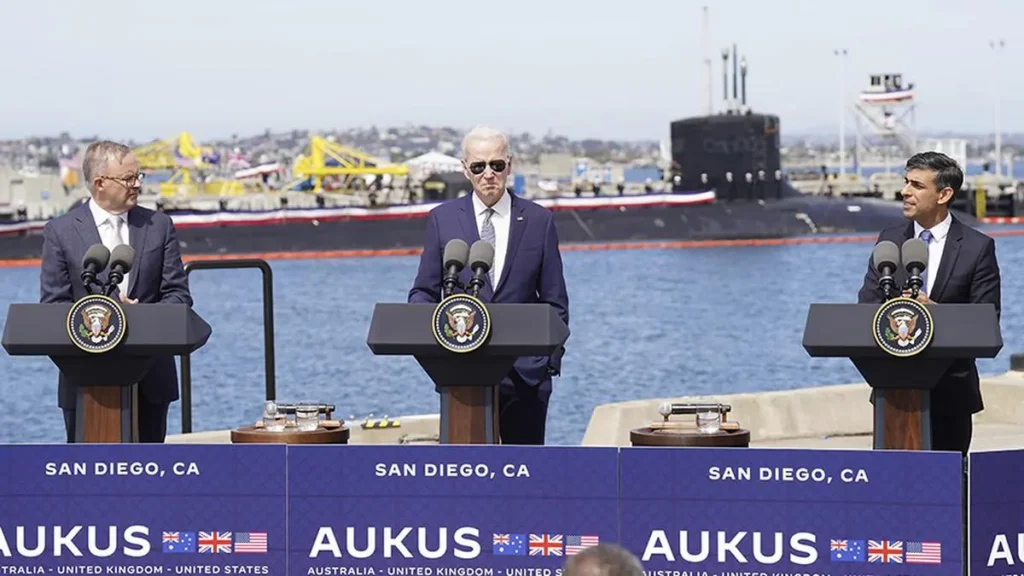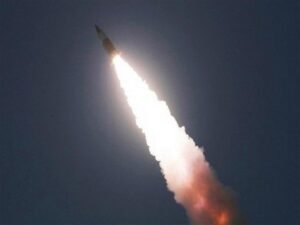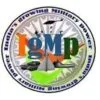Source : The Hindu

AUKUS focus is on submarine tech., there is no room for a fourth nation: Sources
New Delhi: The primary focus of the AUKUS arrangement between Australia, the U.S. and the U.K. is submarine technology development, and within that there is no room for a fourth country, diplomatic sources said on any potential collaboration between AUKUS and India, while stating that there is a second pillar for broader technology cooperation where there is room for cooperation with other countries, including India.
“AUKUS has one ambition. It’s one story, not two stories… The one angle of AUKUS is the submarine angle and there is a pillar-2 which is other capabilities. There has been an announcement on submarines and it’s big for everyone. It’s difficult to say that within that construct, there is a room for a fourth country,” a diplomatic source said. “It [submarine development] is about addressing and maintaining the strategic security balance in the Indo-Pacific.”
“There is a pillar-2 for cooperation in technologies like electronic warfare, cyberspace and quantum, and under that, there is a room for more partners,” the source said.
Recently, the three AUKUS partners announced their implementation plan to equip Australia with SSN class nuclear attack submarines. Under this, Australia will receive at least three second-hand SSNs from the U.S. in the 2030s as an interim measure, while Canberra would receive five new SSNs to be designed and developed by the U.K. from the early 2040s to the late 2050s.
The primary focus of the AUKUS arrangement between Australia, the U.S. and the U.K. is submarine technology development, and within that there is no room for a fourth country, diplomatic sources said on any potential collaboration between AUKUS and India, while stating that there is a second pillar for broader technology cooperation where there is room for cooperation with other countries, including India.
“AUKUS has one ambition. It’s one story, not two stories… The one angle of AUKUS is the submarine angle and there is a pillar-2 which is other capabilities. There has been an announcement on submarines and it’s big for everyone. It’s difficult to say that within that construct, there is a room for a fourth country,” a diplomatic source said. “It [submarine development] is about addressing and maintaining the strategic security balance in the Indo-Pacific.”
“There is a pillar-2 for cooperation in technologies like electronic warfare, cyberspace and quantum, and under that, there is a room for more partners,” the source said.
Recently, the three AUKUS partners announced their implementation plan to equip Australia with SSN class nuclear attack submarines. Under this, Australia will receive at least three second-hand SSNs from the U.S. in the 2030s as an interim measure, while Canberra would receive five new SSNs to be designed and developed by the U.K. from the early 2040s to the late 2050s.
In May, Australia will be hosting the Quad leaders’ summit involving India, Australia, Japan and the U.S., where the recent implementation roadmap is expected to come up during discussions.
On the possible conversation between the AUKUS and the Quad, diplomatic sources said the former has no implications for the latter. AUKUS is not a North Atlantic Treaty Organization (NATO) for the Indo-Pacific. Rather, it is focussed on technology and it’s very specific about developing strategically important capabilities to maintain stability, a diplomatic source said. On the other hand, the Quad is a broader collaboration at the political level.
Official sources too stated that cooperation between India and the U.S. on such a sensitive technology as the SSN is unlikely given the U.S. regulatory frameworks and India’s strategic autonomy.
India has its own indigenous programme for the design and development of SSNs, which will give the Indian Navy unlimited endurance underwater. India is currently looking at procuring six advanced conventional submarines to arrest its depleting submarine strength, and also speeding up its SSN programme.
Engine development
Separately, both U.S. and the U.K. are in the race to co-develop a fighter jet engine with India and France. With the General Electric GE-414 engine has already been selected to power the Light Combat Aircraft (LCA)-MK2, the American government is currently considering an application from General Electric to license manufacture the engine in India.
Making a strong pitch for the Rolls Royce proposal at Aero India in February, the U.K.’s Minister for Defence Procurement Alex Chalk ahd said the jet engine cooperation proposal put forward was the best “out there” and “most cost-effective” that “would set India apart”. “What the U.K. is committed to is the our biggest ever capability transfer in our history. We would be providing more capability than to any other ally — a G-7 country, G-20 country or Five Eyes country,” he had stated.







